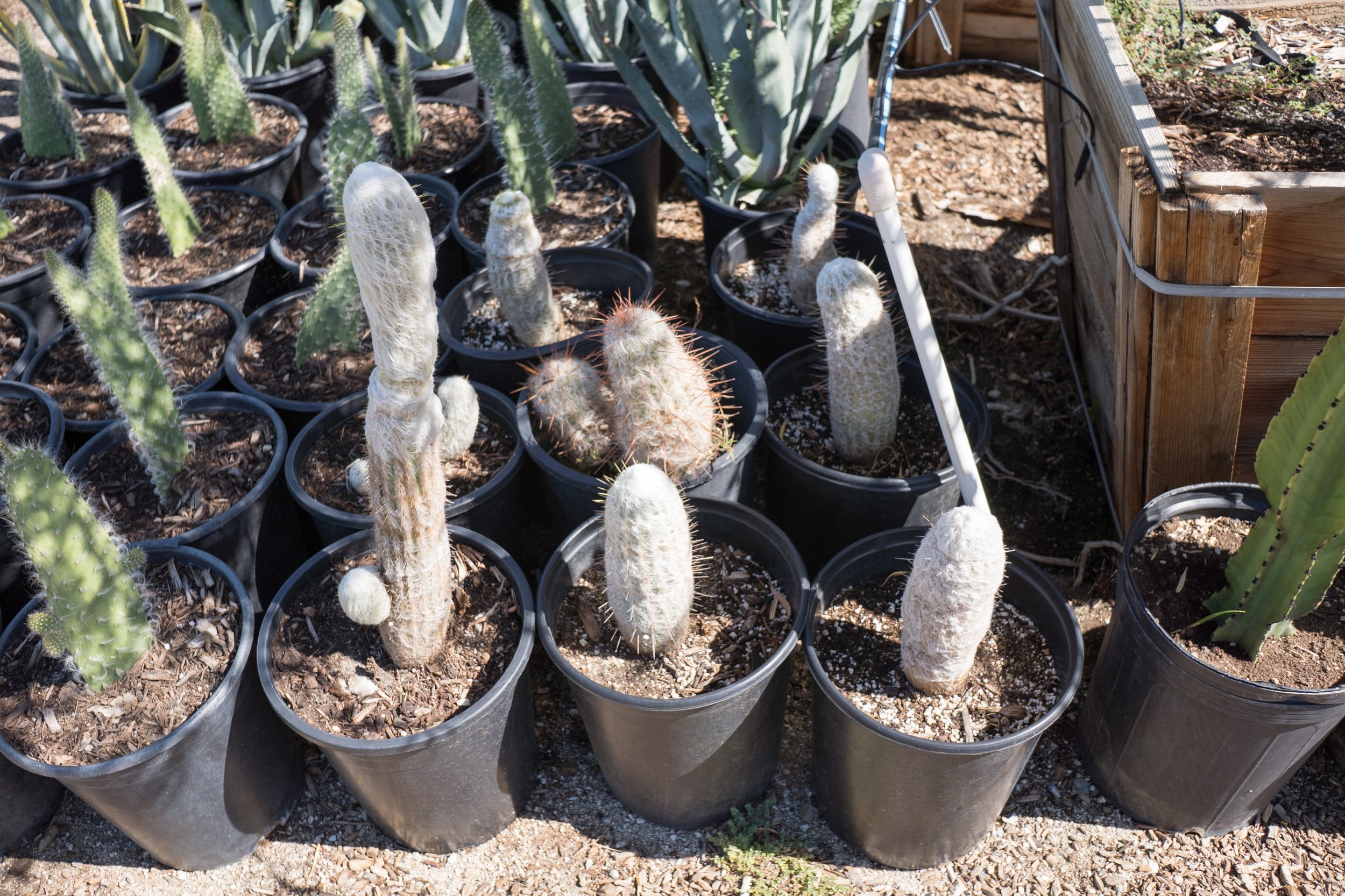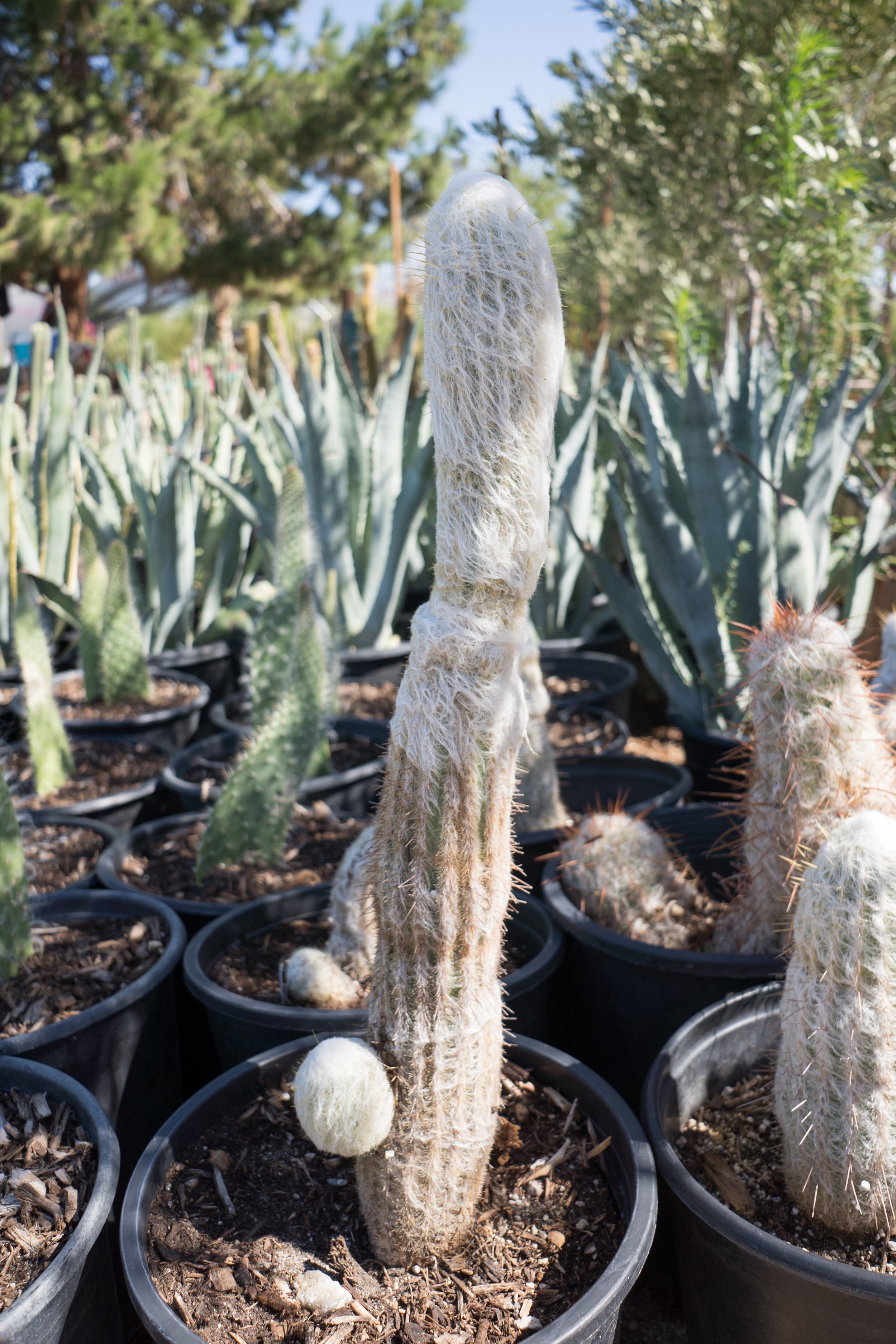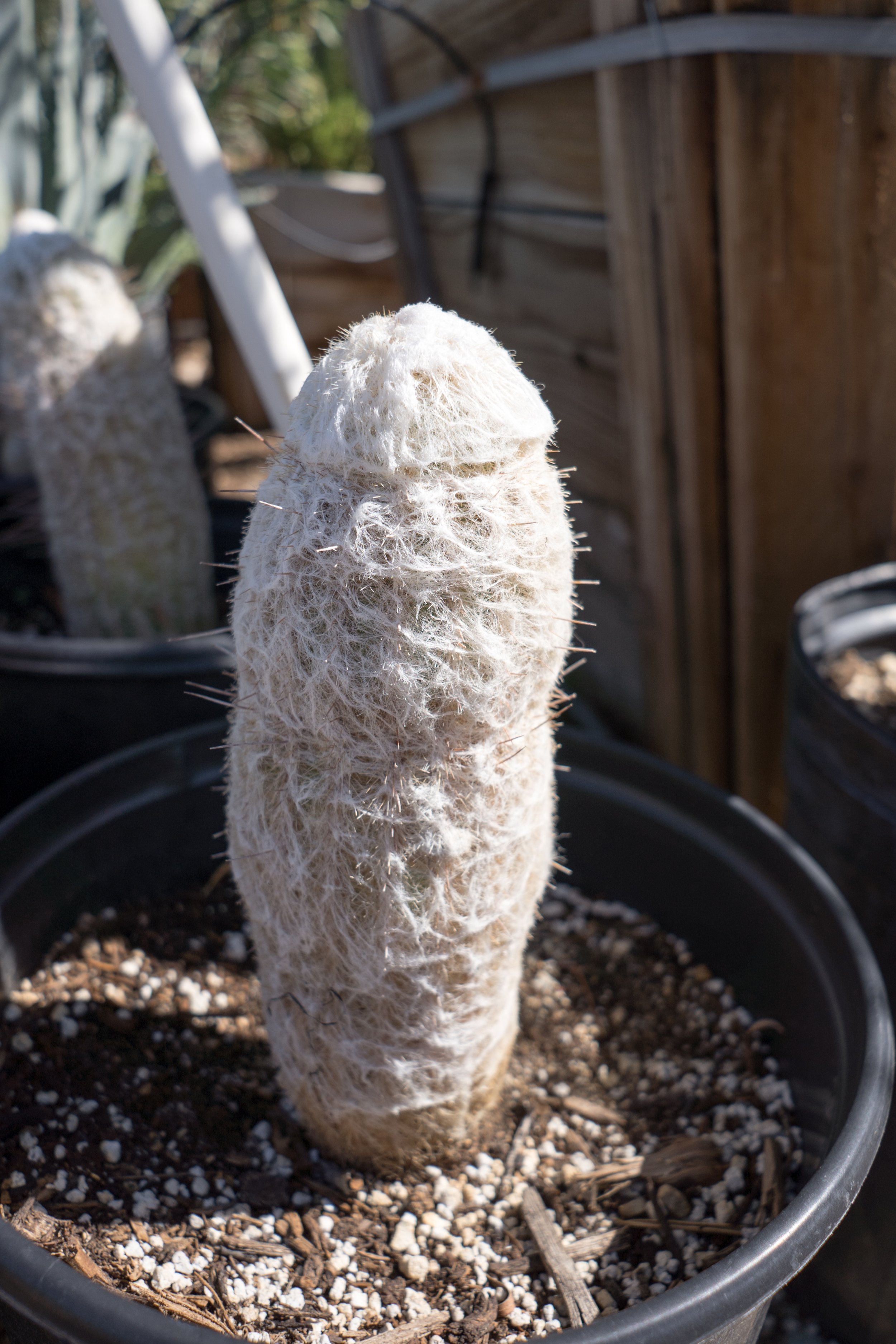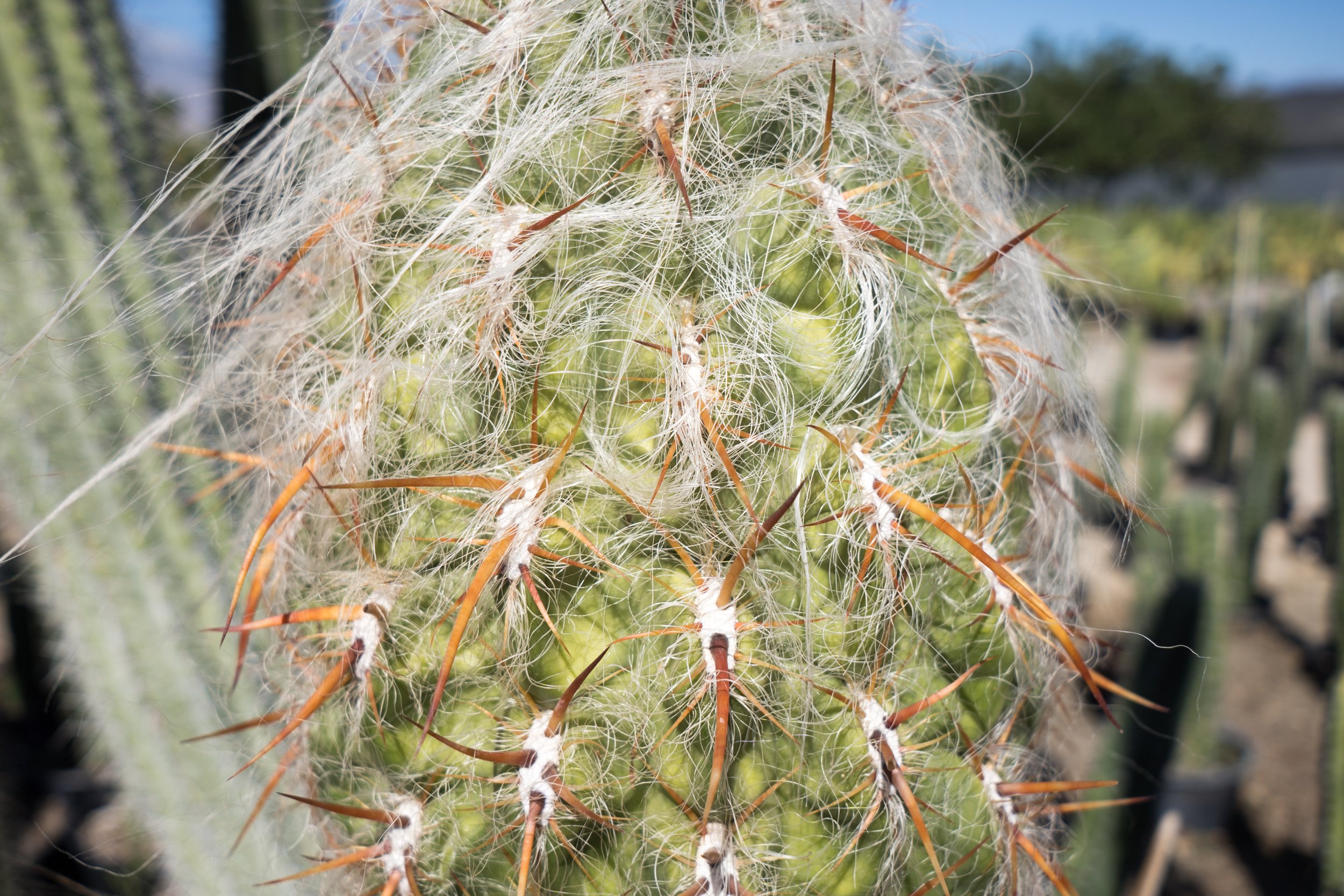Old Man Cactus
Old Man Cactus is the perfect nickname to describe this funny-looking cactus covered with wispy, white hair.
Fun fact- these hairs help the cactus protect itself from cold temperatures as well as the hot sunlight.
But before you put your hand out to touch it, be careful, underneath the hairs are sharp spines that can prick your fingers.
Botanical name: Espostoa Lanata
Other names: Old Man cactus, Snowball cactus, Peruvian Old Man Cactus, Bearded cactus
Old Man Cactus (Espostoa Lanata) for sale at the nursery
TABLE OF CONTENTS
Old Man Cactus Appearance
The most noticeable part of the Old Man Cactus is the numerous long, white hairs, which give it its name. As the cactus gets older, it tends to look fuzzier rather than hairy.
In addition to soft, white hairs, Old Man Cactus has typical cactus spines that are prickly. (Refer to close-up images below)
Grows vertically with very few branches. Will form new main columns from the ground, creating clumps, and slowly spreading horizontally.
Each stem is about 3-10 inches wide. Although Old Man Cactus can grow to 40+ feet tall, this is unusual. Expect it to grow slowly to about 25 feet tall outdoors and 3 feet tall indoors.
Once mature, will form pink, funnel-shaped flowers toward the top of the stem. Blooms at night, and releases a lot of fragrance. Reddish fruits will appear thereafter.
Old Man Cactus Landscaping Tips
Adds wonderful texture and unique color to the garden and home interior. Great candidate for adding variety to a cactus collection.
If planting in the ground, give it some room to spread horizontally as well as complete vertical clearance.
Stays to a manageable size when kept in a container.
The blooms are spectacular with heavy fragrance. The flowers open at night and attract night pollinators such as bats and moths.
Use protective clothing and use caution when handling since the white hairs of the cactus make the spines hard to see.
Old Man Cactus Origin
Northern Peru and Southern Ecuador, which is mostly warm and dry, but humid and rainy in the summer
Old Man Cactus in a 5 gallon container
Old Man Cactus Care
Soil: Loose, well-draining soil that is moderately fertile. Cactus or succulent soil mixes work well.
Temperature: Can withstand temperatures down to frost (= 32 degrees) for a short period of time.
Water: Occasional, deep watering. Allow the soil to completely dry out between waterings. Either use a moisture meter or stick your finger through the soil to gauge the moisture level.
Sun: Full sun to partial shade.
Old Man Cactus Problems
Pests: Old Man Cactus has minimal pests, which include mealybugs and spider mites. Fungal diseases from root rot, dry rot, and harsh weather conditions.
To remove mealybugs, use insecticidal soap or apply rubbing alcohol directly to the area of the infestation using a cotton swab.
To remove spider mites, use horticultural oil for crawlers and insecticidal soap for mites of all stages.
Whenever using any kind of pesticide, be aware that it can damage the plant if the temperatures are in the 80s or above.
Signs of overwatering: Drooping, squishy texture (especially an the bottom of the cactus)
Signs of too little water: Drooping, shriveling, drying skin, fading color
Signs of too much sun: Burning, scarring
Signs of too little sun: Etiolation
Old Man Cactus Propagation
Propagate Old Man Cactus via offsets. Detach an offset with a sharp blade, allow it to callus, and then plant in soil.
Although you can propagate Old Man Cactus via seeds, they don't produce fruits until very mature, and also, they germinate and grow very slowly.
FAQ
How much does Old Man Cactus cost?
At our nursery, Old Man Cactus costs $15 for a 1 gallon container, $65 for a 5 gallon container, $180 for a 15 gallon container, and $500 for a 24” box.
Prices are subject to change. Please contact us for the most up-to-date information on pricing. We may have larger sizes available. We provide installation services locally at a separate cost.
Why is my Old Man Cactus turning brown?
If the browning is above the stem, it is probably just dirt is accumulating the hairs of the cactus. When it's not too hot, simply spray off the dirt with water.
If the bottom of the stem is browning, it could be due to too much water and rot. Check the roots, and cut off any rotten parts.
If the part of the cactus that's brown is the part that receives the most sun, it could be receiving too much sunlight.
Finally, the cactus may be turning brown due to pests. Check for pests, identify them, and remove them accordingly.
Is the Old Man Cactus endangered?
Old Man Cactus is a popular plant in the garden and house. However, the wild plants are endangered in its original habitat in Mexico.
Can you touch an Old Man Cactus?
Although the white hairs of the Old Man Cactus are soft to the touch, beneath the hairs are sharp spines that can hurt you.
Summary
| SIZE (H X W) | 20 feet |
|---|---|
| FLOWER COLOR | White |
| FLOWER SEASON | Spring |
| EXPOSURE | Full Sun/ Partial Shade |
| WATER | Low |
| GROWTH RATE | Slow |
| HARDINESS | 30º F, USDA Zone 9 |
| PRUNING | None |



